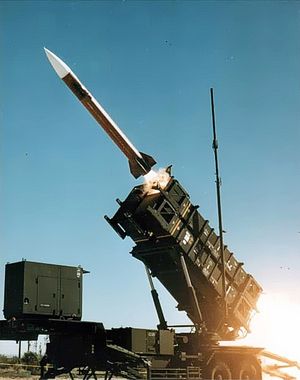Throughout the nuclear era, and especially since the 1980s, the United States has been singularly obsessed with developing a strategic missile defense system. In some ways, this obsession seems to be growing.
A 2011 Arms Control Association report noted that to date the United States had spent over a $100 billion on developing strategic missile defense systems. A Council on Foreign Relations’ Backgrounder from last year contends that the U.S. Missile Defense Agency spent roughly $90 billion between 2002 and 2013, and plans to spend about $8 billion annually (2 percent of the Pentagon’s baseline budget) through 2017.
Strategic missile defense might therefore very well constitute the worst investment-return ratio of any major military system in U.S. history given that decades of work and billions of dollars have produced little in the way of results. To be sure, the U.S. has demonstrated some notable progress in the area in recent years. Still, at best, the missile defense systems the U.S. is developing might provide some unreliable protection against the currently non-existent North Korean and Iranian missile threats to the U.S. homeland.
Yet current missile defense efforts are probably at greater risk of becoming obsolete than at any time before. As Harry Kazianis noted on these pages last year, missile defense’s real enemy to date has been arithmetic. That is, missiles inherently favor the offense because they are exceptionally cheap to deploy and exceptionally expensive to defend against. Another factor that has long bedeviled strategic ballistic missile defense is the necessity of perfection given the sheer destructive power of just a few nuclear warheads.
But this is no longer the only threat to the missile defense systems the U.S. has invested so much in already, and continues to invest in the future. Notably, the emergence of hypersonic missiles could very well render these missile defense systems obsolete.
Hypersonic missiles pose two distinct challenges to current missile defense systems. First, they travel at speeds far greater than what the missile defense systems are built to counter. To be considered hypersonic, a missile must travel at speeds of between Mach 5 and Mach 10, or 3,840–7,680 miles per hour. By contrast, modern cruise missiles travel at speeds of between 500 and 600 mph.
Secondly, hypersonic missiles fired from intercontinental ballistic missiles travel at lower altitudes and have greater maneuverability than the ballistic missiles America’s BMD systems are being built to counter. As Richard Fisher explained to The Washington Free Beacon after the recent Chinese hypersonic missile test: “The beauty of the HGV [hypersonic glide vehicle] is that it can perform hypersonic precision strikes while maintaining a relatively low altitude and flat trajectory, making it far less vulnerable to missile defenses.”
None of this has done anything to diminish the United States’ enthusiasm for pushing ahead with missile defense programs. In fact, support for missile defense seems to be growing among U.S. leaders. Whereas missile defense had been a fiercely partisan issue in the United States for decades—with Republicans strongly in favor and Democrats against—both parties now seem to generally support it, albeit with different degrees of enthusiasm. Indeed, the 2013 National Defense Authorization Act ordered the Pentagon to review four sites on the eastern United States to build missile defense systems to protect the country from the ICBMs that Iran doesn’t have. Moreover, Reuters reported yesterday that the Pentagon now plans to ask Congress for an additional $4.5 billion in missile defense spending over the next five years.
Supporters of these efforts might counter that current missile defense systems aren’t intended to counter the ballistic missile threats posed by Russia and China—two of the four countries currently pursuing hypersonic capabilities (the others being the U.S. and India). Rather, the U.S. is simply trying to protect itself and its allies from less capable regional states like North Korea and Iran. Neither of these countries are known to be pursuing hypersonic capabilities.
This is perfectly true for the time being but it’s far from certain how long this situation will last. If the proliferation of missiles in general is any guide, hypersonic missiles are likely to proliferate across the globe before too long. It’s hardly unthinkable that North Korea and Iran will be among the countries that acquire them whether through indigenous efforts or by purchasing them from foreign sources. Both countries already have advanced missile development programs, as well as a history of foreign support for these “indigenous” efforts. China, in particular, has been quite generous to both when it comes to missile technology.
Therefore, at a time of fiscal austerity the U.S. is essentially investing billions of dollars in technology that will most likely be obsolete before its fully deployed.

































